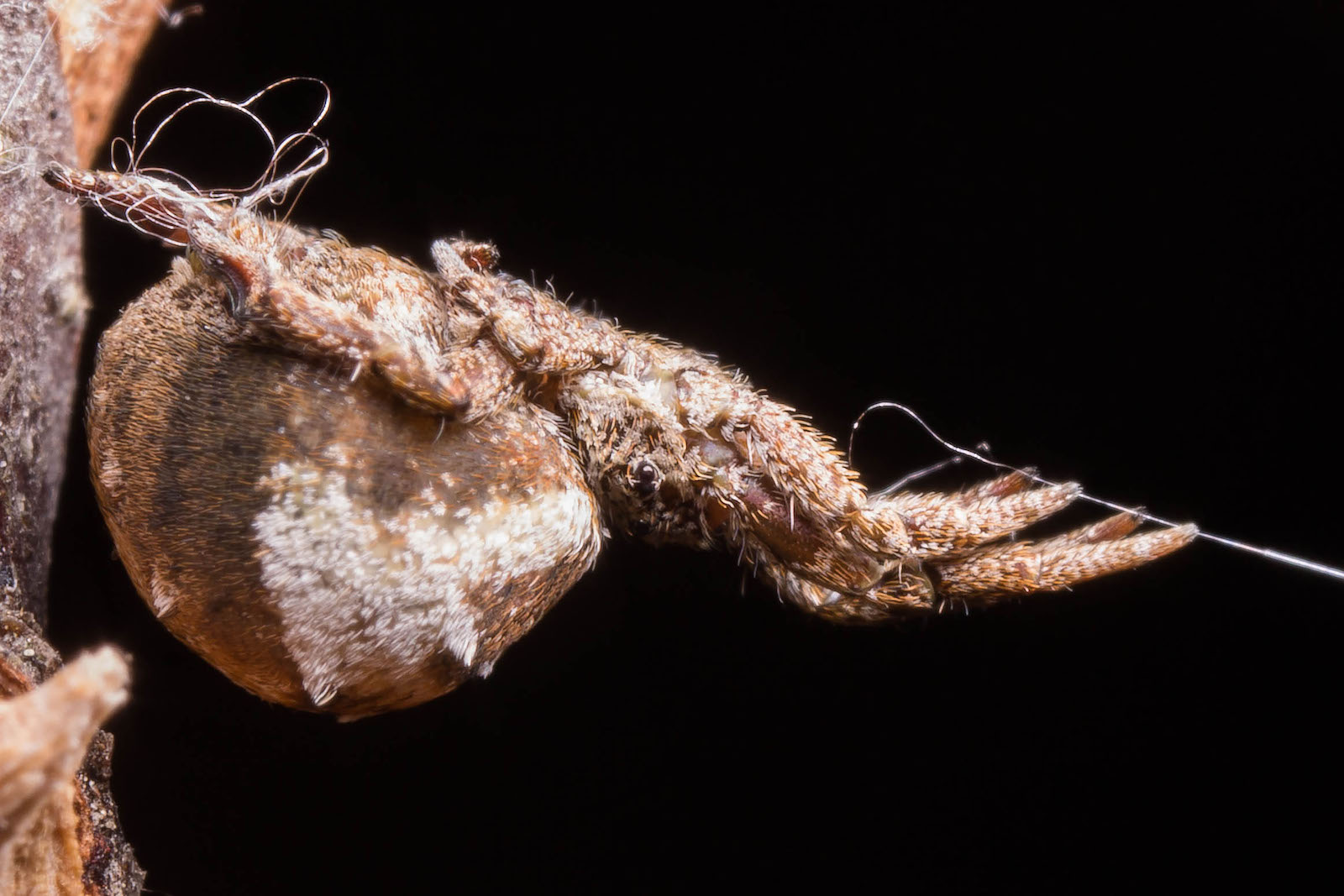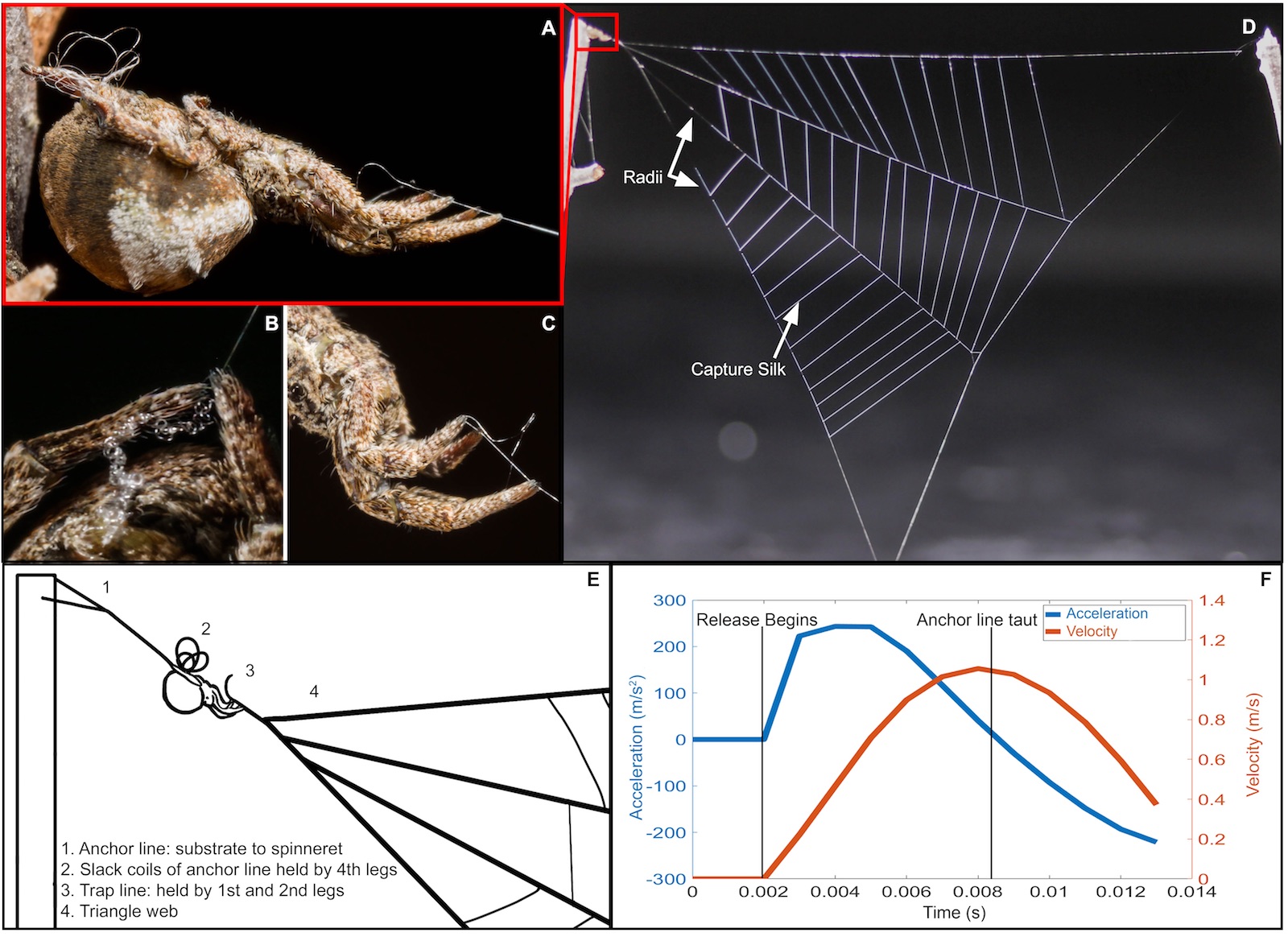This Crafty Spider Doesn't Have Venom...But It Does Have a 'Slingshot'

Does the idea of a spider using its web to catapult itself at high speeds give you the willies? Then be forewarned: the triangle weaver spider (Hyptiotes cavatus) does just that. Which makes it the only known creature, besides humans, to employ a strategy known as "external power amplification, a new study finds.
The concept of external power amplification is simple. Basically, an animal uses an external device (in this case, the spider's web) to store energy, like a person storing energy in a bow with a pulled-back arrow. Once the energy is released, the spider is flung forward like a slingshot, greatly exceeding the speeds at which the arachnid could otherwise travel.
This crafty trick helps the spider survive. The triangle weaver spider doesn't have venom, so it uses this slingshot method to help it swiftly catch prey that land on its web, the researchers said. [Goliath Birdeater: Images of a Colossal Spider]
To study the critter, the scientists collected wild triangle weaver spiders, which are native to the United States and Canada, and brought them to the lab, where the spiders were housed in terrariums and filmed with high-speed videos as they hunted prey.
The videos revealed that after the spider builds a triangular web, it retreats to the web's corner, where the long lines of its web join together. Then it takes the web's anchor line, the main strand that connects the web to something stable, like a branch, and cuts the line in two.
Then, the spider does its trick: it uses its body to bridge the now-loose, cut strand of web. It holds the far end (the end closest to the branch) with its hind legs and the front end with its front legs. Next, the spider walks backward "in a 'leg-over-leg' motion, pulling the web taut," the researchers wrote in the study.

As the spider walks backward, it's essentially storing energy in the web, much like a little kid pulling back a slingshot. The spider can wait like this for hours. Then, when the spider feels a stimulus on itself or the web, it lets go of the rear anchor line and shoots forward with alarming speed.
Sign up for the Live Science daily newsletter now
Get the world’s most fascinating discoveries delivered straight to your inbox.
"All of that stored elastic energy causes a recoil and it [the spider and the web] just flings forward, kind of like when you let go of the rubber band," said study co-researcher Daniel Maksuta, a doctoral student studying polymer science at the University of Akron in Ohio. "It really works out too. [If] the prey is massive in comparison to the web and the spider, the web kind of just flings around it. So, that's how [the prey] gets all tangled up."
The maneuver is so fast, the spider can be hurled forward at accelerations of about 2,535 feet/second squared (772 meters/s^2), the researchers found.
"The spider and the web move a lot before the prey really starts moving," Maksuta told Live Science. In other words, the prey doesn't even know what hit it, and by the time it does, it's too late.
The tiny spider then works to ensnare the prey with more iterations of this slingshot method until the hapless victim is completely wrapped in silk. All of this is done without the spider having to get close to the prey, which protects the eight-legged critter from possible injury.
"It's pretty good at catching prey without having to touch it, unlike a lot of spiders," Maksuta said.
Other animals use power amplification, but it's usually powered by their own muscles, meaning it isn't external like the spider's. Classic examples of this are the jumping mechanisms of fleas, froghopper insects and frogs; the deadly strike of the mantis shrimp; and the tongue projection of chameleons, the researchers wrote in the study.
"We can't really underestimate the technological advancements of organisms," Maksuta said. "They're creative."
The study was published online May 13 in the journal Proceedings of the National Academy of Sciences.
- Creepy, Crawly & Incredible: Photos of Spiders
- Photos: Peer at Glittering Insect Eyes and Glowing Spider Babies in Prizewinning Photos
- In Photos: 7 New Species of Peacock Spider
Originally published on Live Science.

Laura is the archaeology and Life's Little Mysteries editor at Live Science. She also reports on general science, including paleontology. Her work has appeared in The New York Times, Scholastic, Popular Science and Spectrum, a site on autism research. She has won multiple awards from the Society of Professional Journalists and the Washington Newspaper Publishers Association for her reporting at a weekly newspaper near Seattle. Laura holds a bachelor's degree in English literature and psychology from Washington University in St. Louis and a master's degree in science writing from NYU.










